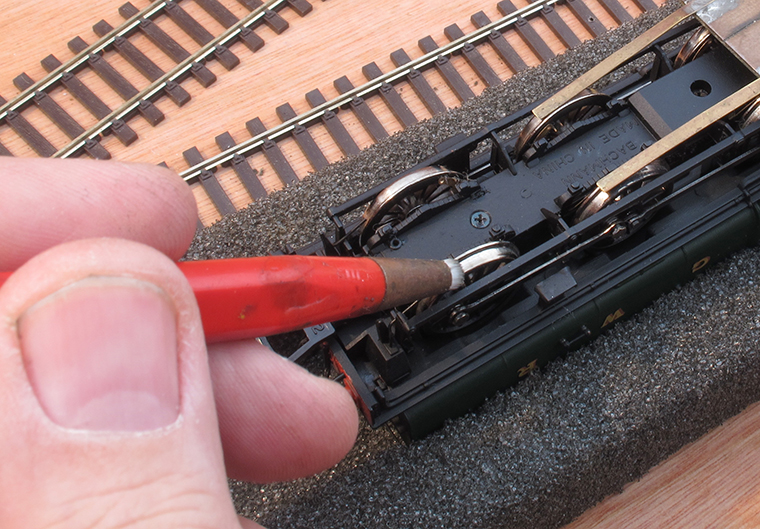21 December 2020
|
In my Christmas stocking, Santa has brought me a "Scratch brush". I'm told it will be really useful on my layout, but what am I supposed to do with it? Kevin, by email.
Lucky you - that's a very useful present for any railway modeller. I keep at least one within reach on my workbench.
Let's start with the basics, a scratch brush is often called a "fibre pen" because it's essentially a handle with a bundle of fibreglass strands inside. Turn the knob at the back of the tool and the strands are eased out of the front. That's important because they will wear out and you can buy refills. It's not an expensive tool, my latest pen came from Squires Tools and, despite being a top-of-the-range model and including refills, cost under £10.

The most important role for the tool is to clean locomotive wheels. Flip the model upside down and connect it to some power using lengths of wire connected to the back of a controller. With the wheels spinning, gently apply the fibres to the treads and watch as they polish up. Don't worry about wear, the metal wheels are harder than the fibreglass, so you will take away the dirt but not damage the surface.
In the same vein, the pen is also great for cleaning up switch contacts and even the side of rails if you are going to solder connecting wires.

Talking of soldering, once you have made a joint, burnish the solder with the fibre pen and it will wear away. Not that important for electrical work, but when assembling a kit, anything polished away wasn't doing anything useful and the joint will be perfectly strong. If you are taking photos for a magazine, it's how you make your soldering look amazing, but don't tell anyone I said that.

Finally, burnishing the lettering or numbers on a RTR loco or wagon will gently remove them. On the wagon above, I've done this so it looks nicely worn, as though the vehicle has been in service outdoors for years.
Handy hint: Sometimes a stray bit of fibre will end up on your finger. Put some sticky tape over it, pull away and this will take the itchy fibre with it.
Do you have a model railway question - send it in and we'll answer it.








